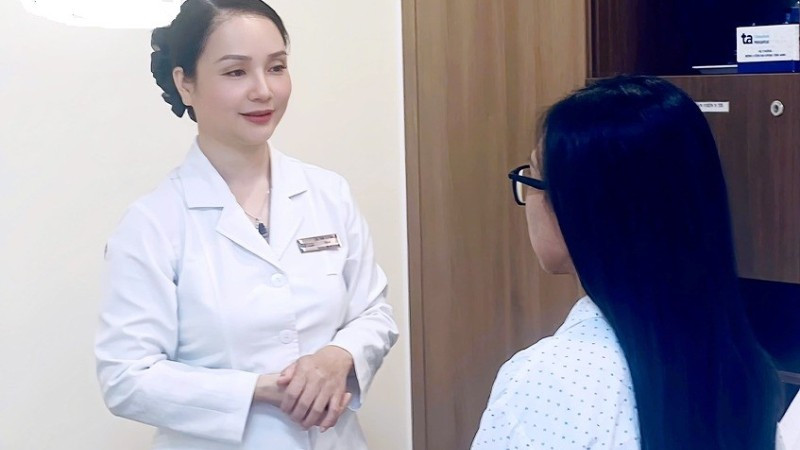
Four years ago, Ms. TM (33 years old) had filler injections in her buttocks at a spa, the substance was of unknown origin, and the person performing the injections was not a doctor. After noticing abnormal signs in her buttocks, she had the filler dissolved twice at the same facility, but there was no obvious improvement.
At the end of 2024, she continued to perform autologous fat grafting on both buttocks at a private hospital. However, about a month before being hospitalized, she discovered a swelling in her right buttocks, thinking it was a boil due to the hot weather, so she arbitrarily used antibiotics at home.
The condition did not improve, but the swelling spread, festered, and was painful. She went to a hospital near her home to have the pus drained and antibiotics given, but the wound did not improve, so she continued to go to Tam Anh General Hospital in Hanoi for examination.
Dr. Hoang Thi Phuong Lan, Department of Orthopedics and Traumatology, Tam Anh General Hospital, Hanoi, said that the surgical wound on the patient's right buttock continuously oozed yellow-brown pus, and the swelling and redness spread to about 20x15cm. Although the left buttock was not infected, it was bumpy and concave, and the filler and implanted fat could be felt, with uneven density.
Paraclinical results such as ultrasound and MRI clearly showed a large abscess in the soft tissue of the right buttock.
Faced with the risk of widespread infection, tissue necrosis and deformation of the buttocks, Dr. Lan prescribed surgery to drain the pus and remove all filler from the damaged area.
The surgery to treat the abscess was quite complicated. During the surgery, Dr. Lan aspirated about 200ml of dark yellow pus, along with necrotic fat and blood. After cleaning, the doctor placed a negative pressure drain to control the infection.
Next, the filler dredging process was performed. About 150ml of dark yellow mucus was removed from the right buttock cavity. The filler had existed in the body for many years, had undergone interventions such as filler dissolving injections, pus injections, causing chronic fibrotic inflammation and spreading.
MRI imaging helps to accurately locate inflammatory tissue and healthy tissue boundaries, helping to limit damage spreading to healthy tissue during surgery.
After surgery, the patient was awake, the incision was dry, hemodynamics were stable, and he could walk and eat normally. However, a drainage tube was still needed for a few days after discharge to control residual fluid.
Although the abscess in the right buttock area had been treated, Ms. M's left buttock still posed a risk. Doctors noted that the filler still remained in the tissue at an uneven density, posing a risk of complications, and a plan for early treatment was needed.
According to Dr. Lan, fillers licensed by the Ministry of Health are usually able to self-dissolve in about 18 months. Existing in the body for too long, especially substances of unknown origin as in this case, can cause inflammatory reactions, infections, even soft tissue erosion and abscess formation.
The patient was instructed to closely monitor the left buttock area and have regular check-ups once a month. During the post-operative period, the bandage was changed every two days, buttock shaping pants were worn continuously for the first month, strenuous exercise was limited, and foods that can easily cause keloids and allergies such as spinach, seafood, eggs, beef, etc.
"The case of patient M. is not rare. In recent years, the rate of complications after filler injections has increased, especially in dangerous injection areas such as the buttocks, chest, and face," said Dr. Lan.
This expert recommends that injecting fillers at an unlicensed facility is gambling with your health and life. When you need to beautify your buttocks, breasts or face, you should do it at a hospital with a licensed cosmetic department, and carefully check the product you will use (origin, ingredients, ability to self-dissolve...).
Women should be careful when using fillers when consulted. Only inject licensed fillers, lasting less than 18 months. When symptoms such as swelling, heat, redness, pain, discharge appear, go to a reputable medical facility as soon as possible.
Source: https://nhandan.vn/ap-xe-hoai-tu-vung-mong-sau-cay-mo-va-tiem-chat-lam-day-post895638.html






![[Photo] Prime Minister Pham Minh Chinh attends the 5th National Press Awards Ceremony on preventing and combating corruption, waste and negativity](https://vphoto.vietnam.vn/thumb/1200x675/vietnam/resource/IMAGE/2025/10/31/1761881588160_dsc-8359-jpg.webp)
![[Photo] Da Nang: Water gradually recedes, local authorities take advantage of the cleanup](https://vphoto.vietnam.vn/thumb/1200x675/vietnam/resource/IMAGE/2025/10/31/1761897188943_ndo_tr_2-jpg.webp)







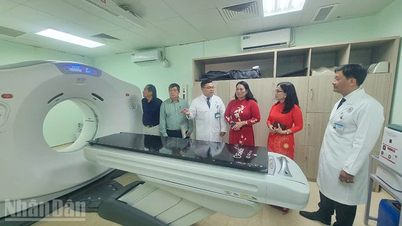
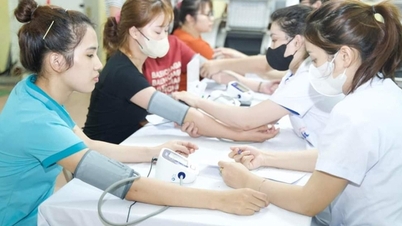






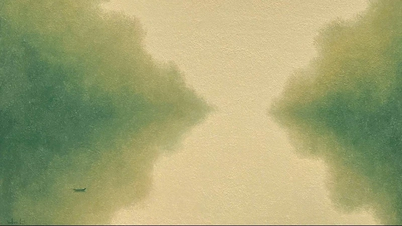

















































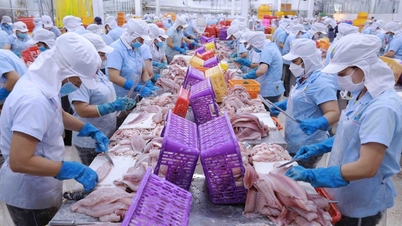





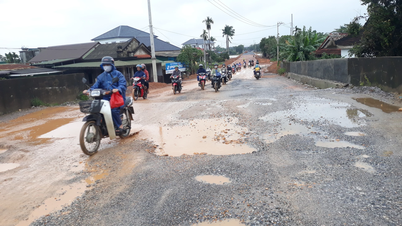




















Comment (0)